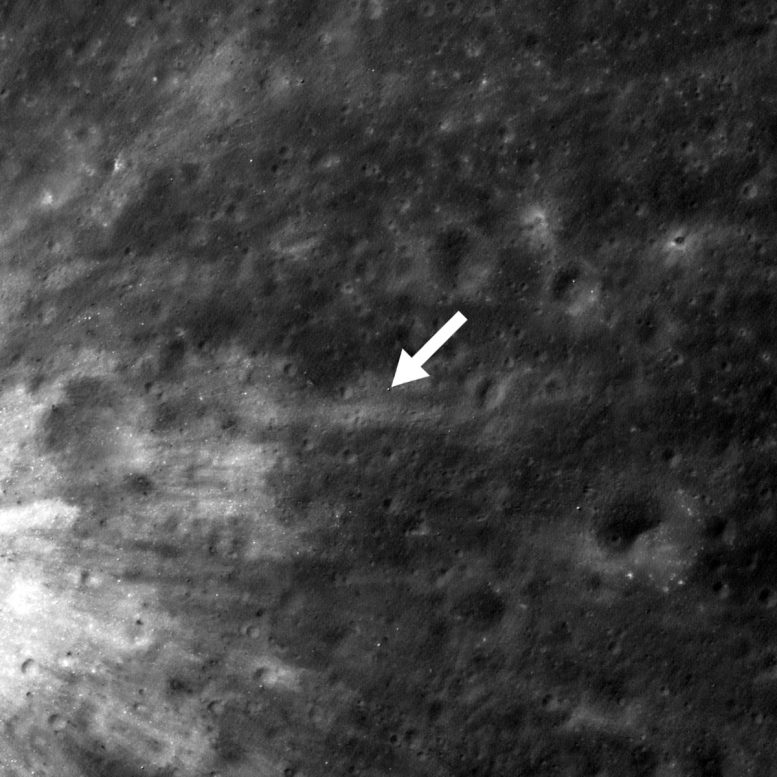
NASA’s Lunar Reconnaissance Orbiter captured this image of the JAXA (Japan Aerospace Exploration Agency) SLIM lander on the Moon’s surface on Jan. 24, 2024. SLIM landed at 13.3160 degrees south latitude, 25.2510 degrees east longitude, at an elevation of minus 2,992 feet (minus 912 meters). The image is 2,887 feet wide (880 meters), and lunar north is up. (LROC NAC frame M14607392143L). Credit: NASA/Goddard/Arizona State University
JAXA’s SLIM lunar landing on January 19, 2024, captured by NASA’s LRO, establishes Japan as the fifth nation to achieve a soft landing on the Moon.
On January 19, 2024, at 10:20 a.m. EST, the JAXA (Japan Aerospace Exploration Agency) Smart Lander for Investigating Moon (SLIM) landed on the lunar surface. Five days later, NASA’s Lunar Reconnaissance Orbiter (LRO) spacecraft passed over the landing site and photographed SLIM.
LRO acquired the image at an altitude of about 50 miles (80 km). Bright streaks on the left side of the image are rocky material ejected from the nearby, relatively young Shioli crater.
Japan is the fifth nation to complete a soft landing on the lunar surface.
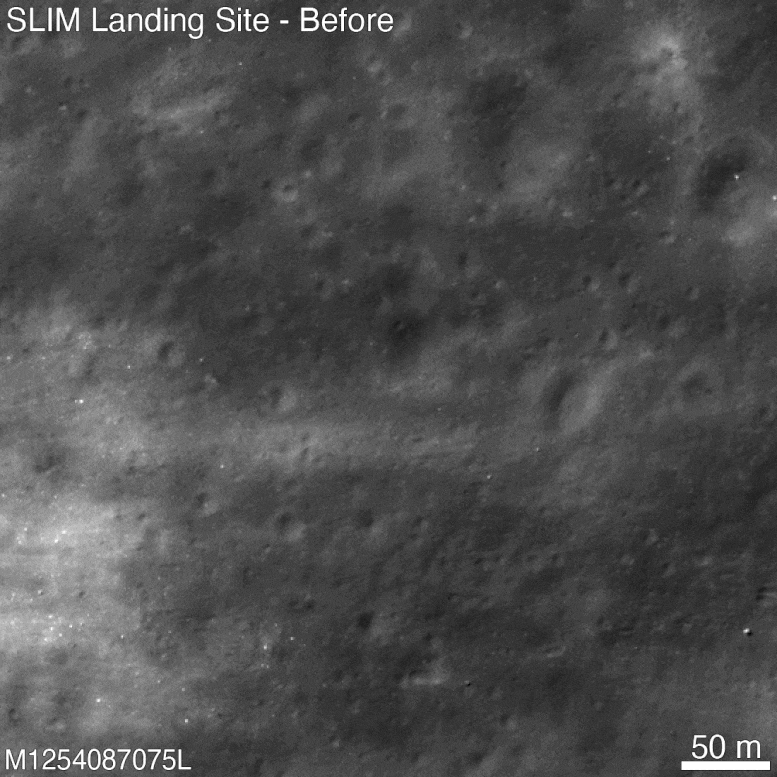
This image pair shows LRO views of the area surrounding the SLIM site before (frame M1254087075L) and after (frame M1460739214L) its landing. Note the slight change in reflectance around the lander due to engine exhaust sweeping the surface. These images are enlarged by a factor of two, and are about 1,444 feet (440 meters) wide. Credit: NASA/Goddard/Arizona State University
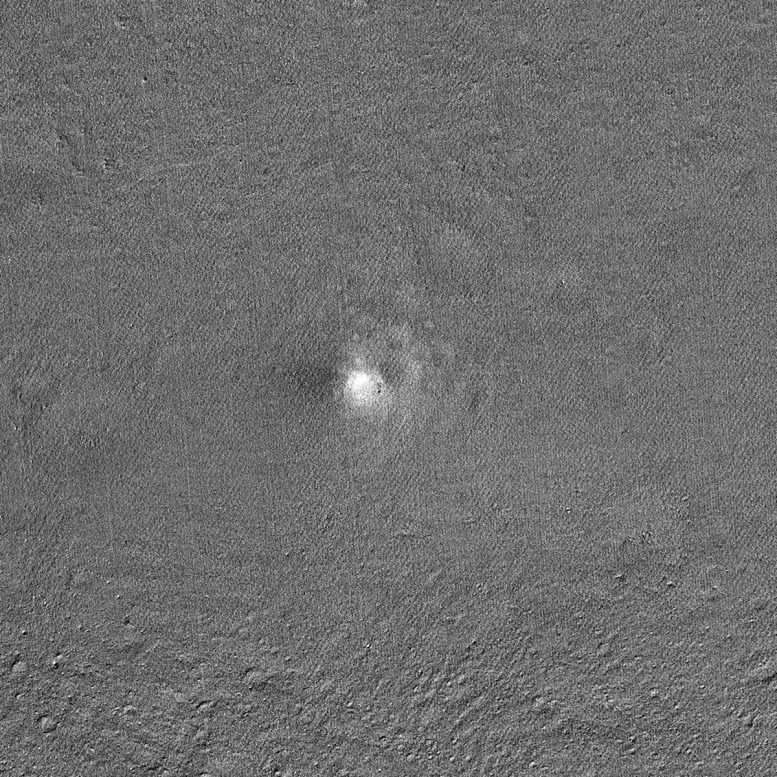
A composite image dividing the before image from after. Features that are the same in both images disappear, highlighting the changes in surface brightness from the rocket plume. The image is 2,887 feet wide (880 meters), and lunar north is up. Credit: NASA/Goddard/Arizona State University
JAXA’s Smart Lander for Investigating Moon (SLIM)
The Japan Aerospace Exploration Agency’s (JAXA) Smart Lander for Investigating Moon (SLIM) is a cutting-edge lunar exploration mission designed to demonstrate precise landing technology on the Moon’s surface. SLIM is a critical step in JAXA’s ambitious lunar exploration program, aiming to achieve a high level of landing accuracy, a capability that is essential for future lunar explorations, especially for missions targeting specific sites of scientific interest.
SLIM employs advanced guidance, navigation, and control systems to achieve its precision landing goals. This technology is crucial for safely landing near lunar features such as craters, ridges, and potentially resource-rich sites that could be challenging to access. The mission is not only a technological demonstration but also contributes significantly to scientific research, as it allows for the investigation of previously unexplored lunar regions.
Moreover, SLIM serves as a precursor for more complex missions, setting the stage for Japan’s increased participation in international lunar exploration efforts. The successful development and deployment of the SLIM technology reinforce JAXA’s role as a key player in the evolving landscape of space exploration.
NASA’s Lunar Reconnaissance Orbiter
NASA’s Lunar Reconnaissance Orbiter (LRO) is a pivotal mission aimed at creating a comprehensive map of the Moon’s surface. Launched on June 18, 2009, the LRO has been instrumental in providing vital data about the Moon’s terrain, resources, and potential landing sites for future human and robotic missions.
Equipped with a suite of sophisticated instruments, the LRO is capable of capturing high-resolution images and topographic maps of the lunar surface, which are essential for scientific research and exploration planning.
The orbiter has significantly advanced our understanding of the Moon’s environment, contributing to key discoveries about lunar water ice and the Moon’s geologic history. By gathering detailed lunar data, the LRO continues to support both current and future lunar exploration efforts.
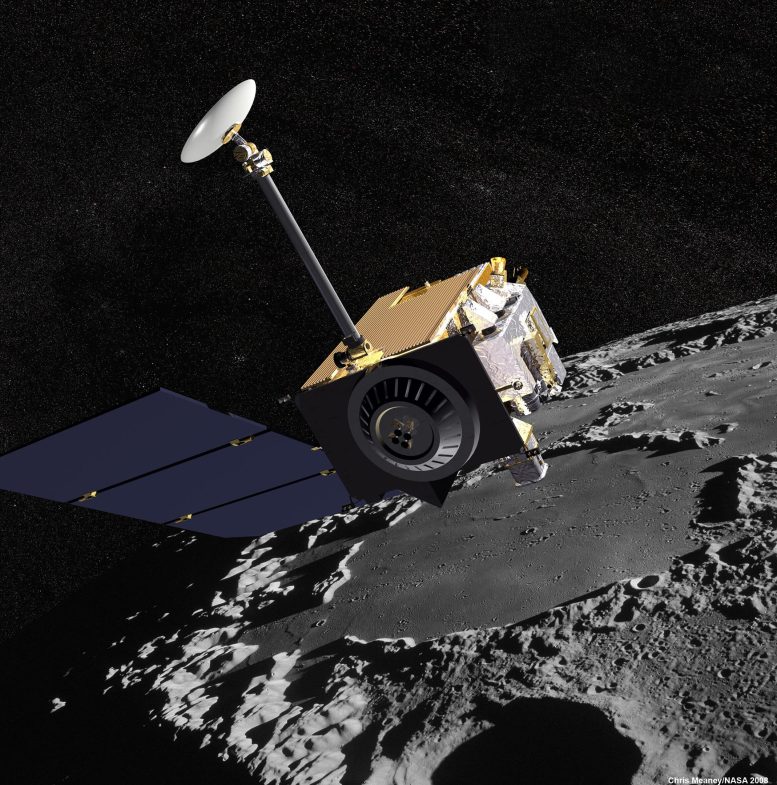
Artist’s rendering of NASA’s Lunar Reconnaissance Orbiter. Credit: NASA’s Goddard Space Flight Center
LRO is managed by NASA’s Goddard Space Flight Center in Greenbelt, Maryland, for the agency’s Science Mission Directorate at NASA Headquarters in Washington. Launched on June 18, 2009, LRO has collected a treasure trove of data with its seven powerful instruments, making an invaluable contribution to our knowledge about the Moon. Arizona State University manages and operates the Lunar Reconnaissance Orbiter Camera, LROC.

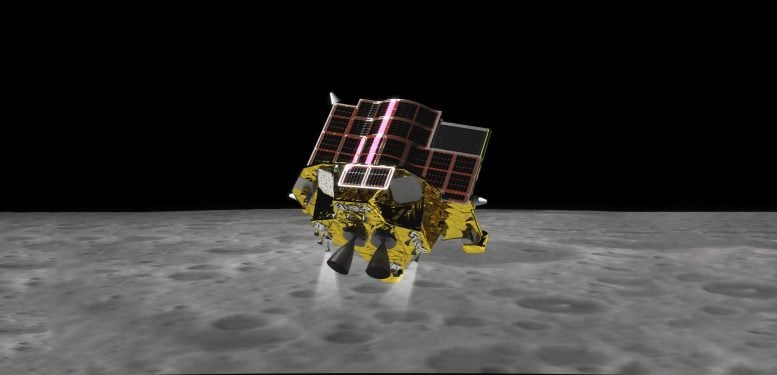


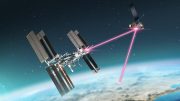





What’s noteworthy about landing toys on the moon?